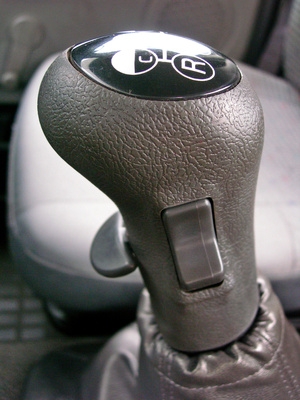
Automanual transmissions are vehicle systems that utilize electronic equipment when the driver changes gears. This differs from a standard manual transmission where the driver changes gears with a clutch. While popular for race cars and other high-performance vehicles, automanual transmissions are also found in consumer-grade vehicles. Automanual transmissions are also known as semi-automatic transmissions and clutchless manual transmissions.
The automanual system was designed by European automobile companies to make driving a more hassle-free experience, particularly in densely populated areas where stop-and-go traffic has historically been an issue. In 1968, Volkswagen produced the first widely available true automanual when it released a line of Beetles with an "Autostick" option. This was an automanual transmission with three forward gears.
Initially, automanual transmissions were fully mechanical. These systems eventually incorporated electricity. Automanual transmissions are now regulated by microchips and vehicle computers. Essentially, however, the concept behind most automanuals is the same. These transmissions use actuators, processors and sensors to shift gears at the driver's command, removing the need for a clutch pedal. The mechanical activity usually carried out by depressing the clutch pedal is automatically done with an automanual system.
With an automanual transmission, drivers can change gears themselves without having to deal with a clutch pedal. This also offers the advantage that standard manual transmissions have over automatic transmissions in that automanuals normally get superior gas mileage compared to automatics. The automanual technology opens up this driving option to a broad range of drivers as standard manual transmissions are oftentimes too tricky for novice drivers to operate because the clutch pedal can take practice and some skill to become proficient at using. Automanuals are often used on race cars due to their ease of use -- so that the driver can focus more on the road and other considerations than have to pay attention to the intricacies of a manual transmission.
An automanual transmission does not offer the driver as much control in the shifting process as a standard manual transmission because many aspects of the gear changing operations are regulated by automated systems. Some drivers consider this to be a drawback because the "feel" of driving a vehicle with a manual transmission is mostly lost with an automanual transmission, and some subtle vehicle controls are also sacrificed, such as being able to choose the exact time to change gears.